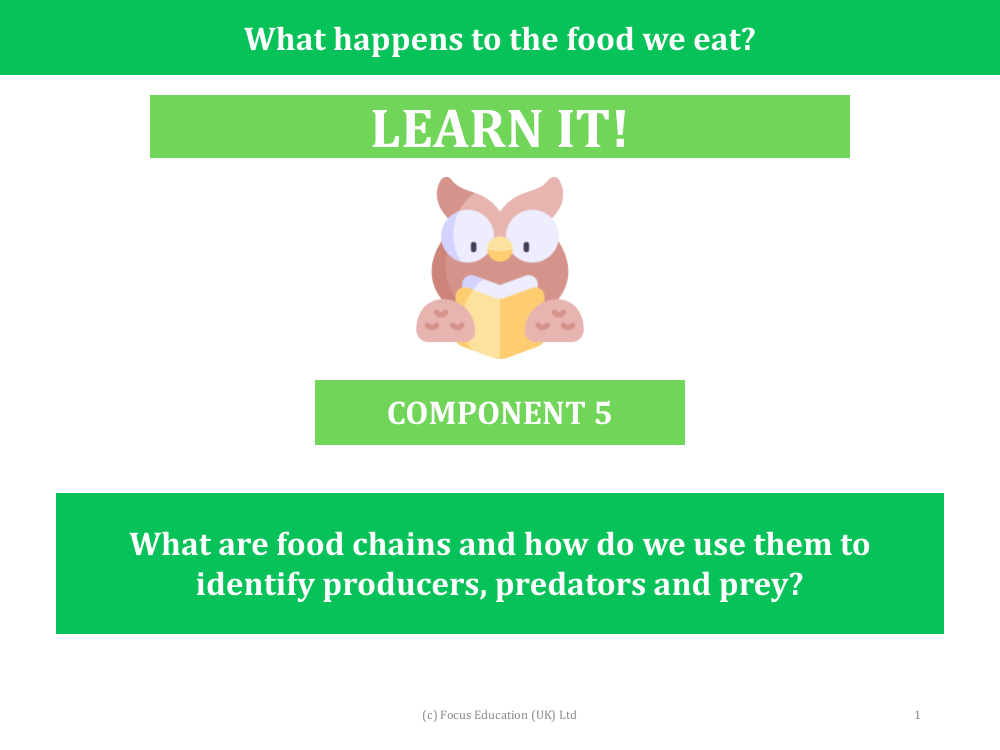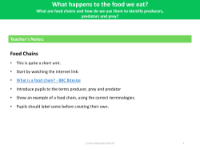What are food chains and how we do use them to identify producers, predators and prey? - Presentation

Science Resource Description
Food chains are a fundamental concept in ecology, illustrating the flow of energy through different organisms within an ecosystem. A food chain starts with producers, usually green plants, which can make their own food through the process of photosynthesis. These producers form the base of the food chain and are essential for supporting the rest of the ecosystem. The next links in a food chain are made up of consumers, which are organisms that eat other plants or animals to obtain energy. Within this group, we can distinguish between predators and prey. Predators are animals that hunt and consume other animals, while prey refers to the animals that are hunted and eaten by predators.
Understanding food chains helps us to identify the roles of different organisms within an ecosystem. For example, in a simple food chain, a leaf (producer) might be eaten by a worm (prey), which in turn is eaten by a bird (predator). The direction of the arrows in a food chain represents the flow of energy and indicates 'is eaten by'. By studying food chains, students learn to categorize organisms according to their ecological roles and understand the delicate balance of natural ecosystems. Activities such as watching educational videos, labelling diagrams, and creating their own food chains enable students to apply these concepts and recognise the interconnectedness of life.


